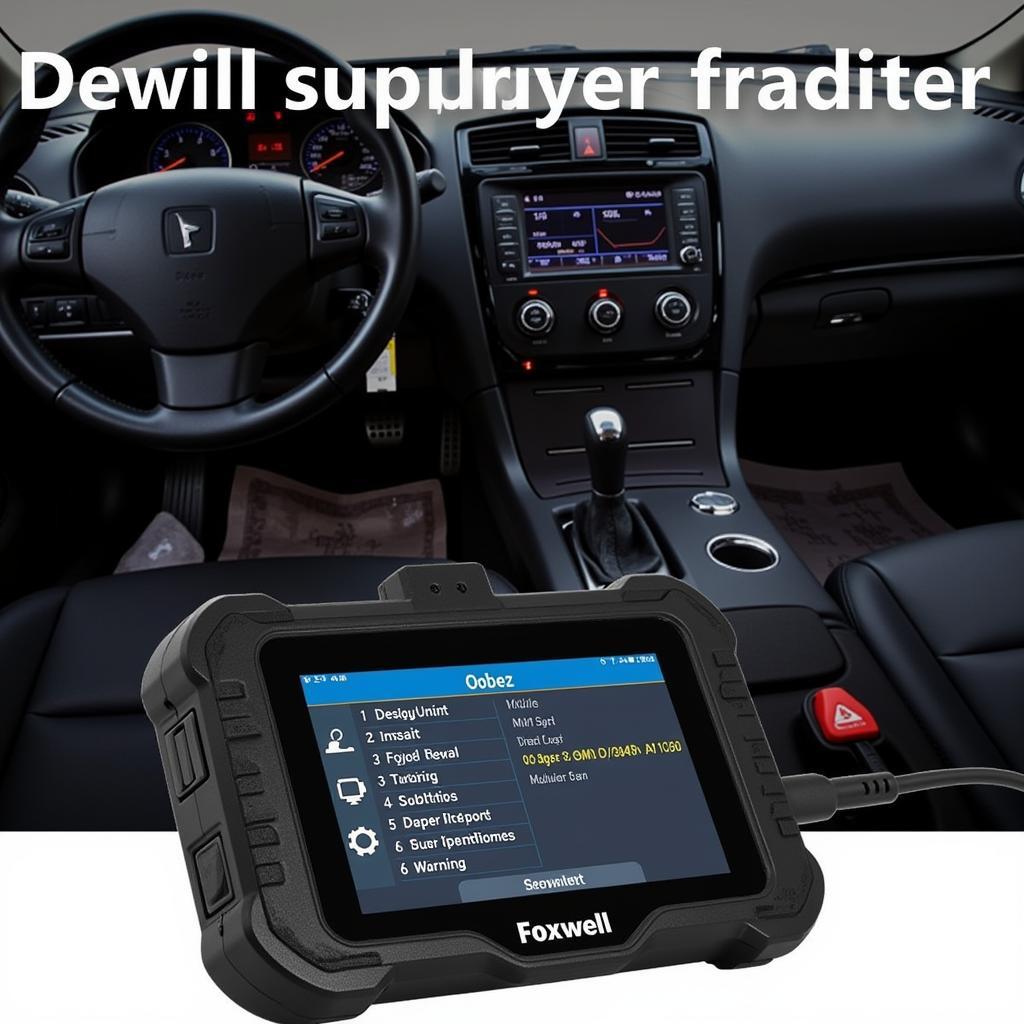The Foxwell scanner has become an indispensable tool for car owners, repair shops, and technicians alike. Whether you’re a DIY enthusiast or a seasoned professional, understanding its capabilities can significantly improve your diagnostic and repair processes. This guide delves into the world of Foxwell scanners, exploring their features, benefits, and how to effectively use them to tackle automotive issues.
What makes the Foxwell scanner a game-changer in automotive diagnostics is its ability to provide comprehensive and accurate information. From reading and clearing diagnostic trouble codes (DTCs) to performing advanced functions like bi-directional control and coding, these tools empower users to pinpoint problems efficiently and resolve them with confidence.
Understanding the Versatility of the Foxwell Scanner
Foxwell scanners offer a wide range of functionalities, making them suitable for various automotive applications. Their ability to perform OE-level diagnostics sets them apart from generic code readers. This means they can access manufacturer-specific data, allowing for a deeper understanding of vehicle systems and more accurate diagnoses.
One key benefit of the Foxwell scanner is its user-friendly interface. Even for those less familiar with automotive diagnostics, the intuitive design and clear instructions make navigating through menus and interpreting data relatively straightforward. Many models also feature large, color displays that enhance visibility and make it easier to identify problems.
Similar to the foxwell nt201 transmission, this scanner provides access to critical transmission data. This allows for quick and efficient troubleshooting of transmission issues, reducing downtime and repair costs.
How Does a Foxwell Scanner Work?
Foxwell scanners communicate with a vehicle’s onboard computer through the OBD-II port, a standardized interface found in most cars manufactured after 1996. By accessing the vehicle’s data stream, the scanner can retrieve information about various systems, including the engine, transmission, ABS, and airbags.
Once connected, the scanner can read and clear DTCs, which are codes stored in the vehicle’s computer indicating potential problems. Beyond basic code reading, many Foxwell scanners can perform advanced functions such as live data streaming, allowing users to monitor sensor readings in real-time and identify intermittent issues.
Choosing the Right Foxwell Scanner for Your Needs
With a variety of Foxwell scanners available, selecting the appropriate model can seem daunting. Factors to consider include the vehicle’s make and model, the desired functionalities, and the budget. For instance, some scanners are designed for specific vehicle makes, while others offer broader coverage.
Consider your experience level as well. Some models cater to beginners with simplified interfaces, while others offer advanced features for experienced technicians. Comparing different models and their functionalities is crucial to making an informed decision. For more information about Foxwell NT201 software downloads, you might find the resource on foxwell nt201 software download useful.
Maximizing Your Foxwell Scanner Investment: Tips and Tricks
To get the most out of your Foxwell scanner, familiarize yourself with its features and functions. Regular software updates are essential to ensure access to the latest diagnostic information and capabilities. Proper storage and maintenance can also prolong the lifespan of the device.
“Keeping your Foxwell scanner’s software updated is crucial for accurate diagnostics,” says John Smith, a senior automotive technician at ABC Auto Repair. “Regular updates ensure compatibility with the latest vehicle models and provide access to new features and functionalities.”
What are the Common Uses of a Foxwell Scanner?
Foxwell scanners are commonly used for diagnosing engine problems, transmission issues, ABS faults, airbag system malfunctions, and other electronic control unit (ECU) related problems. They can also be used for performing special functions such as resetting service lights, calibrating sensors, and performing DPF regeneration.
“Foxwell scanners are invaluable for quickly identifying the root cause of a problem,” adds Emily Johnson, an experienced automotive diagnostician. “Their ability to access live data allows us to monitor sensor readings in real-time and pinpoint intermittent issues that might otherwise be difficult to detect.”
Conclusion
The Foxwell scanner provides a powerful solution for anyone dealing with automotive diagnostics and repair. From DIY enthusiasts to professional technicians, these versatile tools offer a range of functionalities to effectively diagnose and resolve automotive issues. By understanding its capabilities and utilizing its features effectively, you can significantly enhance your diagnostic process and keep your vehicles running smoothly. Contact us at ScanToolUS for more assistance. Our phone number is +1 (641) 206-8880, and our office is located at 1615 S Laramie Ave, Cicero, IL 60804, USA.


